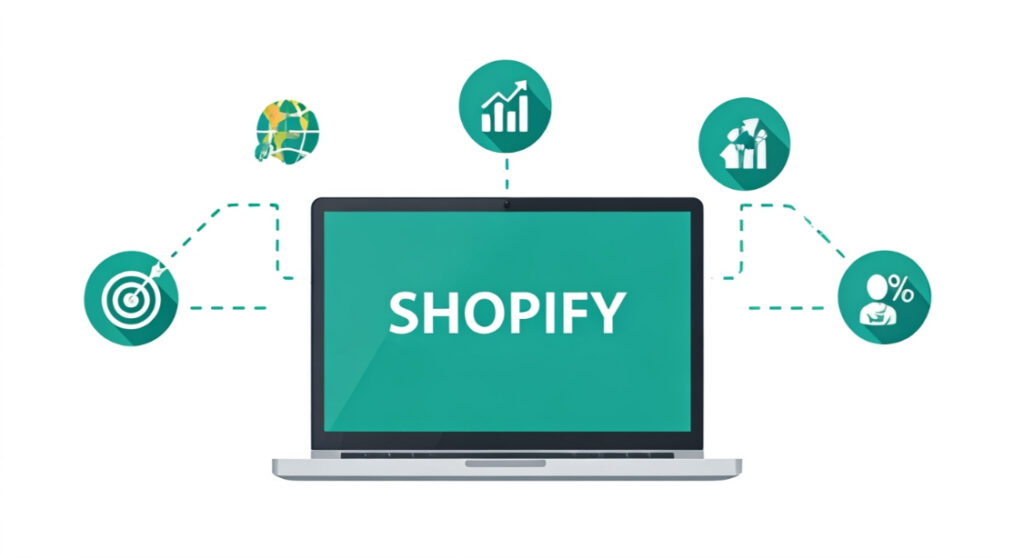Maximize Shopify SEO with Moz: A Practical Guide


Unlock Shopify SEO success! This guide explores powerful SEO tools like Moz to optimize your store, boost rankings, and drive more organic traffic. Learn action
Maximize Shopify SEO with Moz: A Practical Guide
Introduction: Leveling Up Your Shopify SEO Game
Why Choose Moz for Shopify SEO?
- Comprehensive Feature Set: Moz provides a wide array of tools, including keyword research, rank tracking, site audits, and link analysis.
- Actionable Insights: Moz doesn’t just provide data; it offers actionable insights to help you prioritize your SEO efforts and make informed decisions.
- User-Friendly Interface: Despite its complexity, Moz boasts a relatively user-friendly interface, making it accessible to both SEO beginners and experienced professionals.
- Reputation and Reliability: Moz is a well-respected and established name in the SEO industry, known for its reliable data and insightful analysis.
Setting Up Moz for Your Shopify Store
- Create a Moz Account: Visit the Moz website and sign up for a free trial or a paid subscription. Choose the plan that best suits your needs and budget.
- Verify Your Website: Once you have an account, you’ll need to verify your Shopify store. Moz typically provides several verification methods, such as uploading an file to your server or adding a DNS record. Follow Moz’s instructions to complete the verification process.
- Set Up a Campaign: A Moz campaign allows you to track your progress and monitor your SEO performance over time. Create a new campaign for your Shopify store, specifying your target keywords and competitors.
Key Moz Tools for Shopify SEO Success
1. Keyword Research with Moz Keyword Explorer
- Brainstorm Initial Keywords: Start by brainstorming a list of keywords related to your products or services. Think about what your customers might type into Google to find what you sell.
- Use Keyword Explorer to Expand Your List: Enter your initial keywords into Moz Keyword Explorer. The tool will generate a list of related keywords, along with their search volume, difficulty score, and opportunity score.
- Analyze Keyword Difficulty: Pay attention to the keyword difficulty score. This metric indicates how difficult it will be to rank for a particular keyword. Focus on keywords with a lower difficulty score, especially when you’re just starting out.
- Identify Long-Tail Keywords: Long-tail keywords are longer, more specific phrases that typically have lower search volume but higher conversion rates. These keywords can be a great way to attract highly targeted traffic to your Shopify store.
- Prioritize Keywords Based on Relevance and Potential: Choose keywords that are highly relevant to your products and services and have the potential to drive significant traffic and sales.
2. On-Page Optimization with Moz On-Page Grader
- Enter Your Target Keyword and URL: Specify the target keyword for the page you want to optimize and enter the URL of that page.
- Analyze the On-Page Grade: Moz On-Page Grader will analyze your page and assign it an overall grade based on its on-page optimization performance.
- Review the Recommendations: The tool will provide a list of recommendations for improvement, such as optimizing your title tag, meta description, header tags, and image alt text.
- Implement the Recommendations: Follow the recommendations to optimize your page for your target keyword. Make sure to update your content and source code accordingly.
3. Technical SEO with Moz Site Crawl
- Run a Site Crawl: Initiate a site crawl to allow Moz to scan your entire Shopify store for technical SEO issues.
- Analyze the Crawl Results: Moz Site Crawl will generate a report outlining any technical SEO issues it finds, such as broken links, duplicate content, missing title tags, and slow page load times.
- Prioritize the Issues: Prioritize the issues based on their severity and impact on your SEO performance. Focus on fixing the most critical issues first.
- Implement the Fixes: Work with your Shopify developer or use Shopify apps to implement the necessary fixes. This may involve updating your website’s code, configuring your robots.txt file, or improving your website’s speed.
4. Link Building with Moz Link Explorer
- Analyze Your Existing Backlink Profile: Use Moz Link Explorer to analyze your existing backlink profile. Identify which websites are linking to your store and assess the quality of those links.
- Identify Competitor Backlinks: Analyze the backlink profiles of your competitors to identify potential link building opportunities. Look for websites that are linking to your competitors but not to you.
- Reach Out to Potential Link Partners: Reach out to website owners and bloggers in your niche and ask them to link to your Shopify store. Offer them valuable content or consider guest posting on their websites.